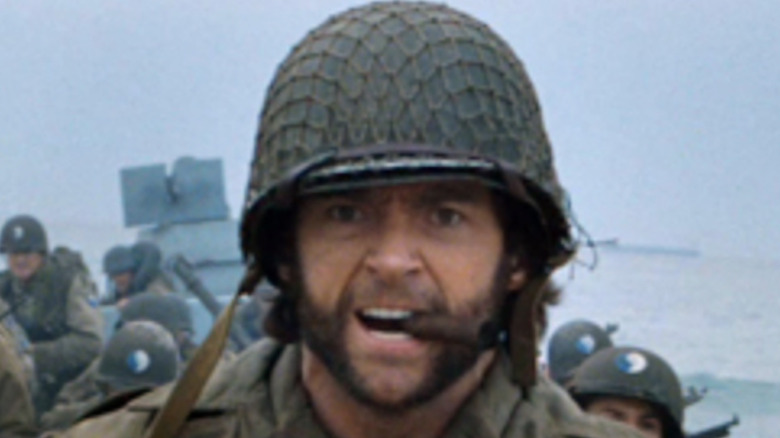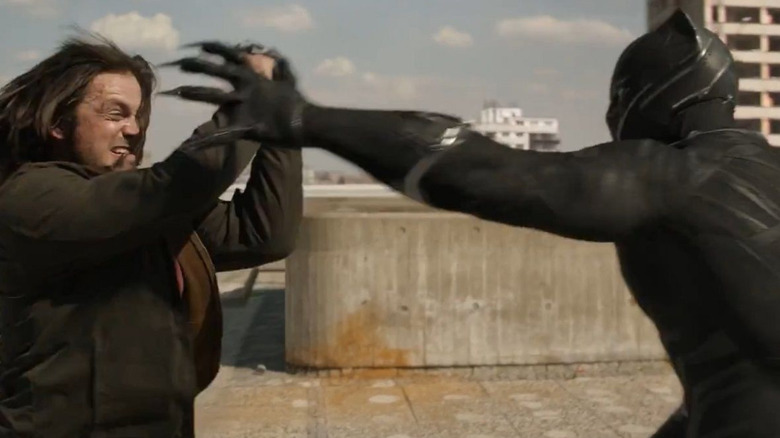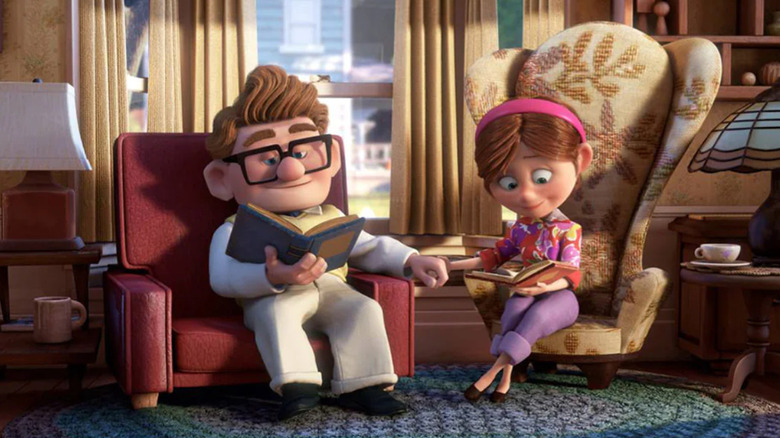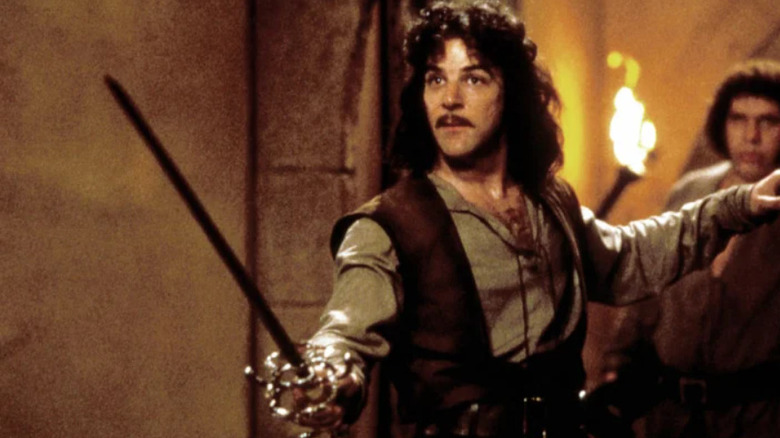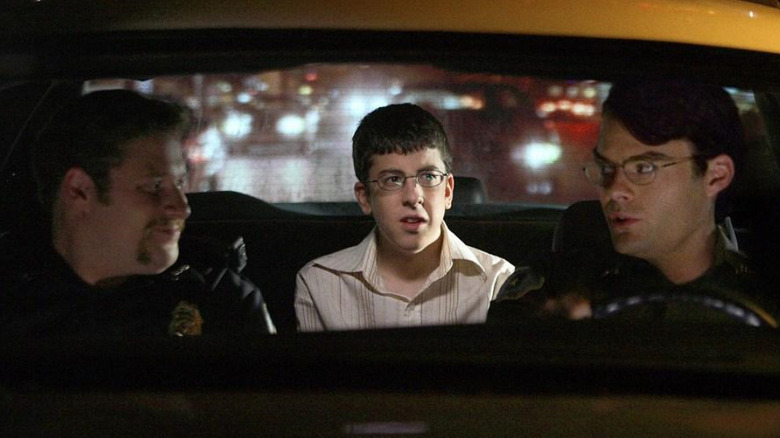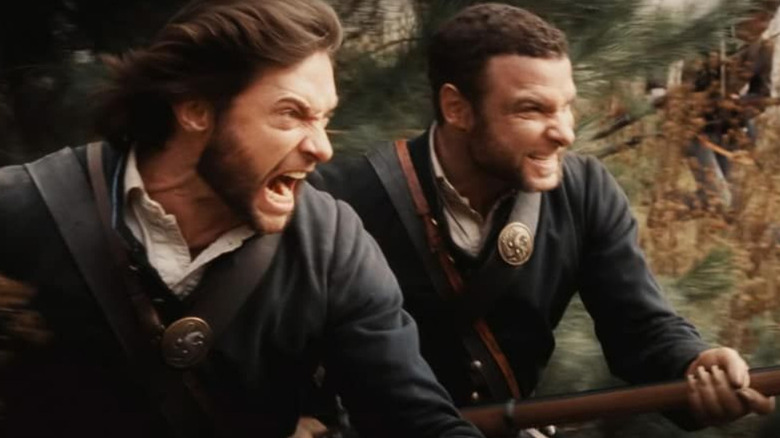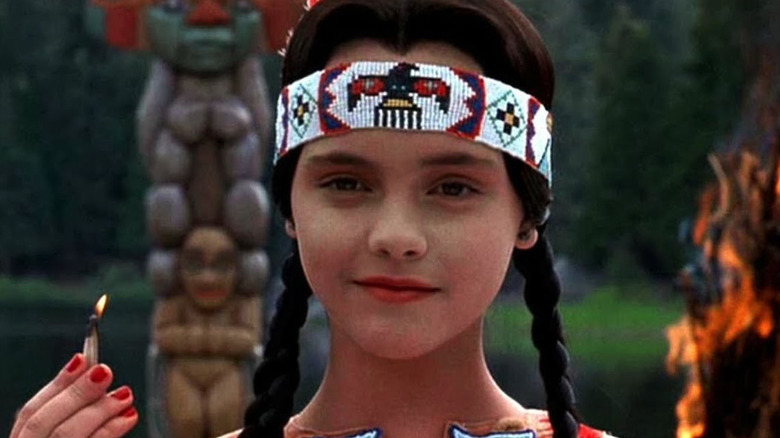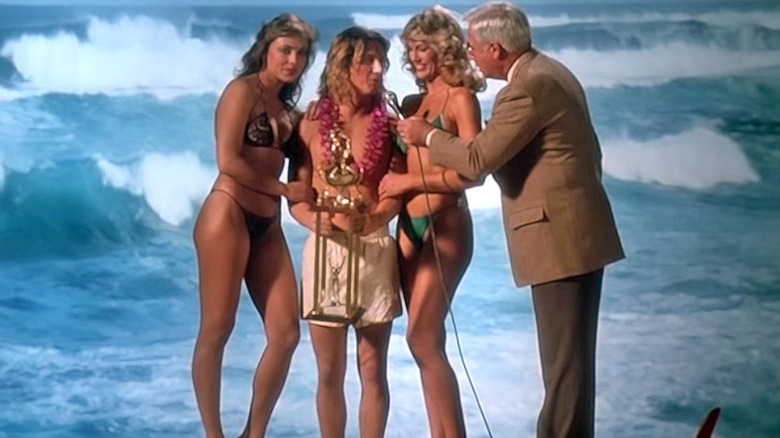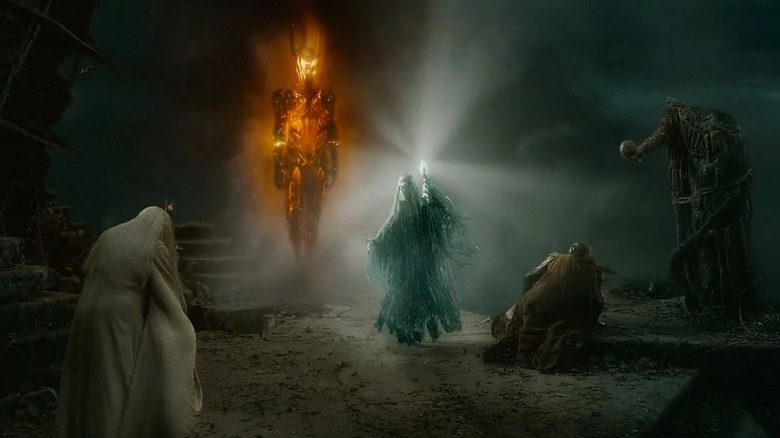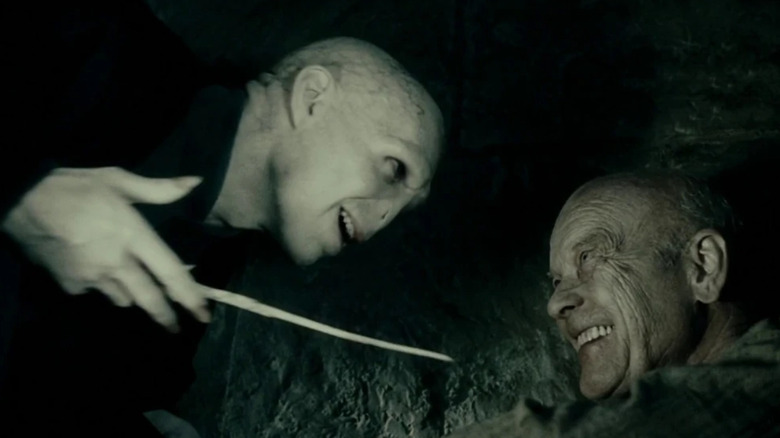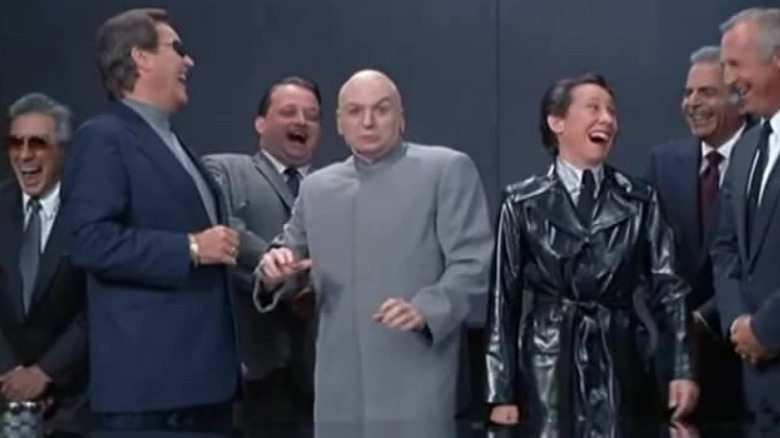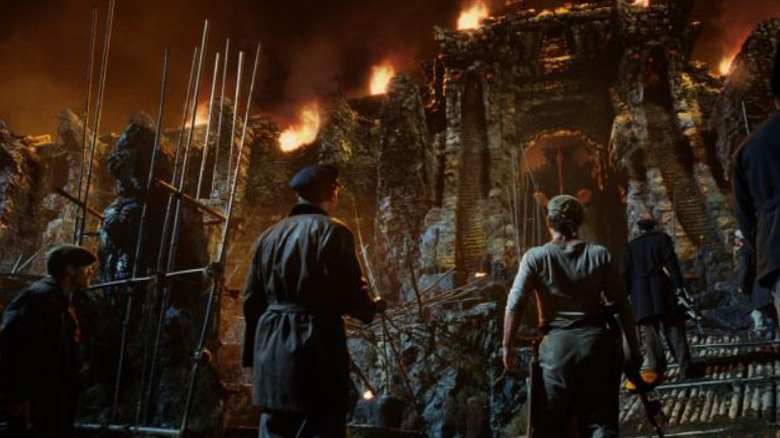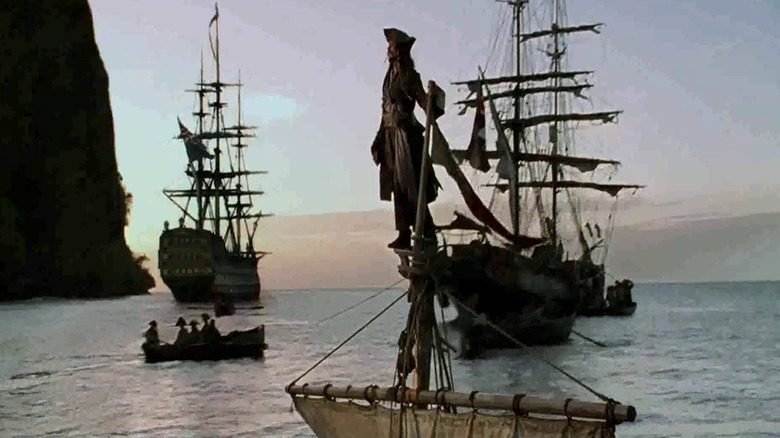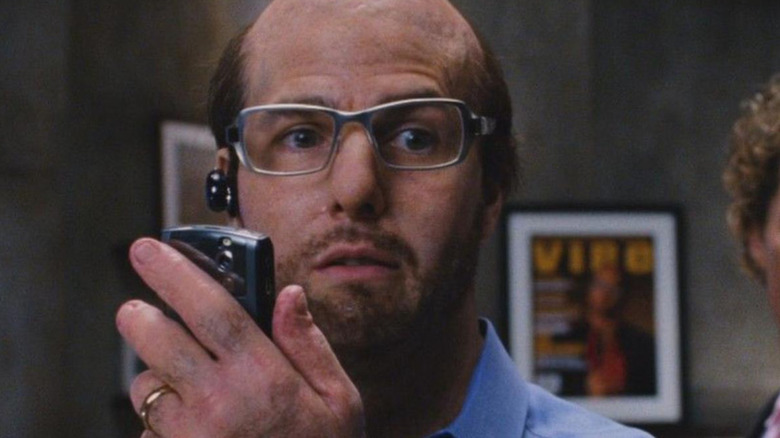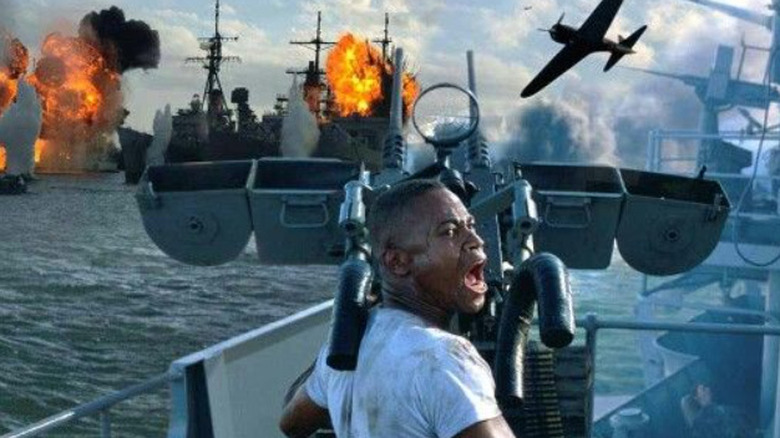Movie Subplots Better Than The Actual Plot
Movies are complicated, unwieldy things to make. The majority are designed with major and minor plotlines, a plethora of characters good and bad, and typically play to an audience that demands not only stimulating entertainment, but also some sort of emotional catharsis once the movie has completed its journey to the end credits. Is a movie art, or is it entertainment? In a word: yes.
It's little wonder, then, that so many movies are birthed feeling like a muddled mess of storylines, character motivations, and action set pieces all thrown together in a blender by an editing committee, in hopes of creating that great, elusive Holy Grail of Hollywood: a box-office blockbuster.
Even when a movie does turn out well, even when the hundreds of in-front-of-the-camera and behind-the-scenes people involved have performed their individual duties exceptionally and (against all odds) come together united as a team, a finished film can sometimes still feel like you're watching the bare bones of something more interesting, often existing just beneath the surface.
Typically, this is because some movies end up minimizing stories that were originally intended to be prominent, or attempting to "world build" their characters by giving them depth that turns out to be more intriguing than the "A" story. Whatever the cause, here are 14 such movies that people may love, but nonetheless had more interesting stuff going on in their supporting storyline than what was happening in the main plot. If these secondary stories had been the film's primary focus, would it have been better? Read on, and you be the judge.
Black Panther hunts the Winter Soldier
2016's "Captain America: Civil War" was among the first indications the MCU was going to become a more interconnected franchise than having the occasional "Avengers" style team-up movie. The film laid the groundwork for introducing major characters in minor subplots, effectively test-marketing the audience's tolerance for the character and whether they warrant a full-on solo film.
In that vein, T'Challa (aka Black Panther, played by Chadwick Boseman) was introduced in "Captain America: Civil War" as part of a secondary storyline that had him hunting down Bucky Barnes (aka the Winter Soldier, played by Sebastian Stan). T'Challa was at first driven by rage as he thought Bucky was responsible for the death of his father. Over the course of the movie, T'Challa learns the true nature of the plot to assassinate his father, eventually releasing the anger that threatened to consume him.
T'Challa's journey was far more compelling than the major conflict of the movie, which had Captain America (Chris Evans) and Iron Man (Robert Downey Jr). squaring off over the Sokovia Accords. Honestly, it was always quite clear that they (and the other superhero allies involved in the skirmish) would eventually make peace. The epic battle between Team Cap and Team Iron Man, accordingly, ended up feeling a little less like all-out-war and more like a playground squabble.
Carl and Ellie's love story
Pixar Studio is famous for its ability to churn out whimsical, vivid animated movies that somehow manage to hit you in the feels in ways that the best live-action dramas cannot. One movie that cemented the studio's reputation in this department was 2009's "Up." Staying true to a reality only cartoons could capture so effectively, the movie featured a house floating with the help of balloons, dogs talking to humans, and an adorable boy scout side character.
But before getting to all these moments of whimsy, "Up" opens with one of the most bittersweet, heart-breaking montages in cinema history. Almost entirely without dialogue, the audience gets to see elderly Carl Fredricksen as a child. We see Carl meet a strange little girl named Ellie. We see Carl and Ellie go from being childhood playmates to a young couple deeply in love, grappling hand-in-hand with the news that they can't have children.
We see them support each other though difficult times, as their hair begins to grey and wrinkles begin to form. We see them dream of going away to live in their idealized house. We see Ellie fall ill before the dream is realized, and we see Carl now living alone as a grumpy old man, bereft of the company of the woman who had meant everything to him. Within the span of a few minutes, Pixar not only gave their film more motivation and backstory than most trilogies achieve, but also gave us one of the most powerful love stories in all of fictionalized film.
Inigo Montoya's quest for revenge
Even if you have never seen "The Princess Bride" (1987), there's a good chance you have heard the phrase: "My name is Inigo Montoya. You killed my father. Prepare to die." It has entered the lexicon of classic films lines, and has also sold many a t-shirt.
But what many forget is that Inigo (Mandy Patinkin) was only a supporting character in the film. His revenge storyline — which involved him repeating the phrase again and again, as he finally lived out his fantasy of taking on the six-fingered man who had murdered his dad — was a minor B-story in the overall tale of true love between Westley and Buttercup, even if it was more compelling.
The central conflict of "The Princess Bride" concerns the fair maiden Buttercup's (Robin Wright) love for lowly farmhand Westley (Cary Elwes). While Westley is away making his fortune so he can claim her hand, Buttercup becomes embroiled in a marriage with Prince Humperdinck (Chris Sarandon). Also thrown into the mix are a band of outlaws led by Spanish fencing master Inigo.
While Westley and Buttercup go about the business of getting hitched in the face of dastardly opposition, it is much more interesting to watch Inigo train to become the greatest swordsman in the world as preparation for his fateful battle against the man who made him an orphan at a young age and scarred him for life. If there is indeed "true love" in this film — the greatest thing in the world, except for a nice MLT — it is between the audience and Inigo.
McLovin meets two good/bad cops
In the eyes of some, 2007's "Superbad" was the last great high-school comedy Hollywood ever produced. It was also stuffed to the brim with the very best of actors in terms of comedic talent, helping launch the careers of emerging talents from Jonah Hill, Emma Stone, and Bill Hader to Michael Cera, Seth Rogen, and more.
But for many fans, the film's character is nonetheless "McLovin" (Christopher-Mintz Plasse). The dweeby teen becomes the stuff of legend when Seth and Evan's friend Fogell wants was to celebrate the conclusion of high school by getting drunk with his friends — and getting some action from a cute girl. Instead, everything goes horribly sideways, and Fogell is arrested by a pair of police officers with some very offbeat notions of what "serve and protect" should mean.
Fogell finds himself unwillingly helping the cops get back in touch with their wild sides as the trio get drunk, shoot up street signs with their guns, and set fire to their police cruiser with a Molotov cocktail. It's an off-the-wall, unexpected relationship between a teen and cops, one unlike anything shown in prior high-school comedies — and if it had emerged as the "A" story of the film, it seems doubtful audiences would have mined one bit.
Logan and Victor fight in every major war
Before the MCU had all of Hollywood scrambling to create their own shared universes, the closest thing to a Marvel Cinematic Universe might have been Fox's live-action mutant movies, which had dozens of main characters pairing up and squaring off (Colossus with Deadpool, Gambit with Wolverine) in various incarnations. Sure, the series may have been extremely hit or miss — and 2009's "X-Men Origins: Wolverine" was one of the misses — but even in bad movies, you can frequently find good things.
Billed as the start of a new string of films focusing on the origins of individual members of the mutant super team, "X-Men Origins: Wolverine" was so bad that the studio was forced to do a complete 180 with their future plans for spin-off "Origins" films around Magneto and others. But despite being too long, too boring, and absolutely butchering the character of Wade Wilson (aka Deadpool), there was one thing the film did right, and it occurred in the first few minutes of its runtime.
In a stunning opening montage, we see James Howlett (aka Logan, aka Wolverine, played by Hugh Jackman) fighting side-by-side with his half-brother Victor (aka Sabretooth, played by Liev Schreiber) in ever major American war over the past century. From the American Civil War to both World Wars (storming the beach at Normandy) and even Vietnam, we catch a glimpse of the centuries of war and bloodshed that both Wolverine and Sabretooth endured together. Director Gavin Hood should have just stopped there and expanded the sequence as far as he could stretch it — because a full two-hour film on this subject, as it turns out, would have been far more compelling than what he had planned for the rest of "X-Men Origins: Wolverine."
Wednesday Addams goes to summer camp
The Addams Family has been entertaining the world for generations as comic strips, tv shows, live-action movies and cartoons. 1993's "Addams Family Values" saw Gomez (Raul Julia), Morticia (Anjelica Huston) and their family grapple with the prospect of adding a "regular" person into the fold when Uncle Fester (Christopher Lloyd) fell for the new nanny Debbie (Joan Cusack), equally smitten with him.
Unbeknownst to the family, Debbie was secretly a serial killer whose M.O. involved marrying rich bachelors, then killing them and keeping their money. While this main storyline was entertaining enough, something far more interesting took place in a b-plot that ended up stealing the film — after Debbie tricked Morticia and Gomez into sending their children Wednesday (Christina Ricci) and Pugsley (Jimmy Workman) to summer camp.
This breakout storyline had the other kids at the camp confused by the Addams kids' gothic appearances, while Wednesday terrified the other campers with chilling horror stories and dark behavior that perplexed the camp directors. The cherry on the sundae came during a play the camp children put on for their parents, as Wednesday staged a coup resulting in the destruction of the camp — after which she and Pugsley return home via a hijacked van. All in all, these delightful scenes are far better remembered decades later — and enough to make you hopeful for the "Wednesday" spin-off series Tim Burton is currently developing for Netflix, which will hopefully feel like the extended film these scenes should have received.
Everything Jeff Spicoli gets up to at Ridgemont High
Despite being met with lukewarm reviews upon release back in 1982, "Fast Times at Ridgemont High" has since come to be regarded as one of the greatest high school movies ever made. The movie dwelled on the lives of a handful of students at the titular Ridgemont High, with a focus on Stacy Hamilton's (Jennifer Jason Leigh) love story with Mark "Rat" Ratner (Brian Backer).
But today, their frequently by-the-numbers love story is less fondly remembered than future Oscar-winner Sean Penn, whose groundbreaking take on stoner side character Jeff Spicoli laid a blueprint for offbeat, dim characters that have provided comic relief (and endlessly quotable lingo) in films and TV up to this day. Many of these scenes involved epic battles of wit with Mr. Hand (Ray Walston), his domineering history teacher.
Everything about Spicoli, from his love for getting high, to his surfer-dude persona, to his relationship with Mr. Hand have become classic tropes of the high school comedy genre in the decades since. Spicoli's saga still remains iconic decades later — and if he's never able to do a spin-off film depicting an entire Spicoli solo story, perhaps Penn could simply make a movie about his fascinating dynamic with the unnamed, very-real person who inspired his take on the character.
The hunt for the Necromancer
Peter Jackson's "The Lord of the Rings" movie trilogy is generally considered one of the greatest series of all time, and with good reason. The films are a slam dunk when it comes to acting, cinematography, action, special effects, and pretty much every other moviemaking department. All these reasons are why it was such a tall order to measure up to the original trilogy with a prequel series based on J.R.R. Tolkien's single novel "The Hobbit."
Fans may have known the prequel trilogy was in trouble when the most memorable part of the first entry in the series, 2012's "The Hobbit: An Unexpected Journey" was listening to the main dwarf characters singing around the dinner table. However, amidst all the preoccupation with dwarf treasure and the really, really long journey towards getting it, a much more interesting subplot hinted at future events of "The Lord of the Rings" years down the line.
Gandalf's (Ian McKellen) fellow wizard Radagast the Brown (Sylvester McCoy) told of an adventure in Dol Guldur against a powerful evil creature known simply as the Necromancer. Eventually, Gandalf would move against the Necromancer alongside Lady Galadriel (Cate Blanchett) and Saruman the White (Christopher Lee), at which point the foul creature revealed himself to be a weakened shade of Sauron, the main villain of "The Lord of the Rings" saga.
Sadly, this subplot wasn't done justice. But if given more time and room to develop, it could have been a side journey worth taking.
Dumbledore's murky past
By the time the final "Harry Potter" movie was winding down to its epic conclusion, audiences felt they had come to know everything about the main cast of characters, in terms of their history and personal motivations. All that was left to do in the two-parter "Harry Potter and the Deathly Hallows" films was bring the good guys together for one final climactic (if somewhat predictable) battle against the army of Voldemort (Ralph Fiennes).
But as it turned out, there was one character whose motivations still remained a mystery to the audience. Albus Dumbledore (Michael Gambon), the most powerful wizard in the world, the Yoda to Harry's Luke, the Professor X to Harry's ... Jean Grey, maybe? Anyway, it was revealed in a startling subplot that Dumbledore had a much darker origin story than anyone anticipated. Through flashbacks, the audience learned that Dumbledore had once been great friends with Gellert Grindelwald, the greatest Dark Wizard of all time, until Voldemort entered the picture.
We also learned that Dumbledore plotted with Grindelwald to subjugate the muggles when he was younger, seeking mastery over Death by gathering the Deathly Hallows. Witch our concept of Dumbledore transformed from the wise, old, ever-smiling headmaster into a conflicted former dark wizard aid secretly planning for Harry's death all along to fulfill a prophecy, this was one of the biggest mindscrews in the history of the "Harry Potter" franchise. It was also an 11th-hour development that could warrant an entire prequel film of fascinating exploration.
Dr. Evil's personal life
1997's "Austin Powers: International Man of Mystery" is perhaps the most well-known parody of James Bond movies in pop culture — although, technically, it was just as much a spoof of Bond spoofs like "Hammerhead," "Modesty Blaise" and James Coburn's "Flint" films. Mike Myers starred in a double role, one of them being secret agent Powers — who prefers to use judo chops and his outrageous sex drive to foil the machinations of international terrorists.
But while Austin is the guy in whose name the franchise was created, it became clear from the first movie that the real breakout character of the franchise was criminal mastermind Dr. Evil (based largely on Donald Pleasance's Ernst Stavro Blofeld), also played by Myers. Austin Powers goes through the more predictable gags making fun of spy movie tropes, but Dr. Evil's personal life lends itself to much more imaginative storytelling.
From trying to connect with his son Scott (Seth Green) to trying to run his evil empire while not being quite sure how modern currency works, everything that comes out of Dr. Evil's mouth is comedy gold. The folks behind the camera realized this; the character received increasingly more prominence in each subsequent installment of the franchise, his antics becoming more bizarre. As Dr. Evil toyed with his tiny clone Mini-Me (Verne Troyer), appeared on "The Jerry Springer Show" and even made rap videos, he clearly became this franchise's Fonzie. Decades later, Dr. Evil remained popular enough with mainstream audiences to allow Mike Myers to reprise the character in a 2014 "Saturday Night Live" sketch — and with all the makeup the character requires, who's to say an older Myers couldn't still bring the good Doctor back once again, finally giving him the spin-off movie he deserves?
The island where King Kong lived
While the original "King Kong" movie is considered a monster movie classic, it has a pretty basic premise that doesn't really lend itself to much reinvention. Giant ape lives in a distant forest. Giant ape is brought into the city, where man and nature naturally collide, and the ape is killed in the process. There's not much more that can be added to the King Kong mythology unless he is duking it out with another King of the Monsters.
But in 2005's adaptation of "King Kong" by Peter Jackson, we catch a glimpse of a fascinating subplot regarding the mighty ape that deserves its own movie. The story begins with a journey to the mysterious, isolated island where Kong lives. There we find a world filled with dinosaurs and other giant monstrosities, with King Kong ruling over the realm as his personal domain.
But the most intriguing aspect of the island is the tribe of humans who dwell there, somehow managing to survive amidst the formidable odds that accompany coexistence with T-Rexes. We also get to see some of the rudimentary technology that the natives have created to help them navigate around the island safely. How these folks came to live on the island, and how they managed to survive there for so long, could make for a truly great "Man vs. Nature" monster film — and with films like "Kong: Skull Island" opening to good box-office, it feels like a concept ripe for a revisit.
Jack Sparrow's quest to recover the Black Pearl
The movie that kicked off the franchise, 2003's "Pirates of the Caribbean: The Curse of the Black Pearl" began as a fairly formulaic romance-adventure film. Audiences were introduced to low-in-status, yet exceedingly handsome blacksmith Will Turner (Orlando Bloom), as well as his love for the feisty daughter of a nobleman, Elizabeth Swann (Keira Knightley). This was accompanied by hints of some dark magic in Will's life that he would have to deal with while uncovering the truth about his missing father.
Yet, all signs that this was a movie about Will's quest to find his father and win the hand of Elizabeth were thrown out the window the moment famed pirate Captain Jack Sparrow (Johnny Depp) swaggered drunkenly into frame, teaming up with Will to rescue Elizabeth. He was far and away the breakout character, and years later still remains the first face fans see when looking back on the massively-successful series.
So, why didn't Jack Sparrow receive his own proper spin-off film, examining the plethora of backstory that seemed to exist within this fully-formed, distinctive creation? The not-so-funny story behind it is that Jack Sparrow solo films were considered in various stages — heck, largely Bloom-and-Knightley-less adventures like 2011's "On Stranger Tides" and 2017's "Dead Men Tell No Tales" (where they had a brief cameo) were ostensibly them. Disney even released a prequel series of books that might give some indication of what a proper solo film could have contained. But as the "Pirates" films moved along, so too did a disturbing re-examination of Depp, and the actor is viewed today by many to be too toxic to lead a film, nevermind a massive blockbuster. There has been some talk of relaunching the franchise, and some fans do want to see Depp in a pirate hat again — but unlike an adventurer searching for Davy Jones' Locker, you might not want to hold your breath.
Les Grossman dominates every frame of Tropic Thunder
2008's "Tropic Thunder" is the sort of film that seems to come along maybe once in a generation. It brought together a ridiculous number of leading men, all at the top of their game — including Ben Stiller, Jack Black, Bill Hader, Matthew McConaughey, and Robert Downey Jr. — all making significant, memorable contributions and clearly having a lot of fun in the process.
Yet, this staggeringly-talented cast was completely upstaged by Tom Cruise in a small-ish, surprisingly unglamorous, career-reinventing supporting turn as Les Grossman, a vitriolic, stereotypical studio head accustomed to getting his way. When the cast of a Vietnam film called "Tropic Thunder" sees everything go sideways on their location filming, it's up to Cruise's Grossman (back in LA) to deal with heroin-producing jungle rebels and bring the actors home safely.
Completely unrecognizable under extensive makeup and prosthetics, Cruise dominated every scene he was in with energy to spare, seemingly freed by an unorthodox, improv-heavy aesthetic that the actor has rarely shown in his movies. From dropping f-bombs on the revels to plotting how to turn the story of the abduction into something profitable for the studio to dancing to a Ludacris song, it seems likely that Cruise and co. got plenty of jabs in on the real-life studio execs they've all spent so much time around. The Grossman character was repulsive, endlessly watchable — and left the audience wanting more.
Pearl Harbor should have focused on Cuba Gooding Jr.'s character
Historical dramas can be a minefield to navigate for filmmakers. Critics and experts are always on alert for any historical inaccuracies or liberties that the movie may take. Things get even more dicey when the filmmaker adds heaps of fiction to the narrative, sometimes at the expense of cutting out actual historical events.
That is what happened with Michael Bay's 2001 war drama "Pearl Harbor." Set amidst the tragedy of the actual aerial attack on Pearl Harbor on December 7, 1941, the film chose to focus on a fictional love story between Captain Rafe McCawley (Ben Affleck), a USAAC combat pilot, and nursing Lieutenant Evelyn Johnson (Kate Beckinsale). The love story has since been accused of dragging down the film's narrative while watering down the gravity of the attack from which the film gets its title.
But amidst all this fictional romance, one side character who had actual historical significance was Cuba Gooding Jr.'s Petty Officer Second Class Doris "Dorie" Miller, a cook who in real life became famous for manning anti-aircraft guns during the attack despite having no training, bringing down two enemy planes. Miller's story was previously depicted in the 1970 classic film "Tora! Tora! Tora!," but similarly depicted as a minor part of a larger story.
With so many real-life heroics on display that day, it seems like Bay could have easily sidestepped fictional romance and focused instead on real-life compelling tales. Ultimately, his "Pearl Harbor" merely teased viewers with the sense that an entire film told from the perspective of Miller would make a compelling watch.
